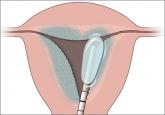Surgical Techniques

Cost-conscious choices for minimally invasive gynecologic surgery
Attention to the costs of the surgical devices, instruments, and related products you use can help ensure greater value for the care you provide—...
Deborah Reale, Managing Editor

Laparoscopic hysterectomy provided the shortest operating time with minimal blood loss when compared to the vaginal approach in a cohort of obese women
In obese women, laparoscopic hysterectomy provided the shortest operating time with minimal blood loss when compared with vaginal hysterectomy, according to a poster presented at the 42nd AAGL Global Congress in Washington, DC, in November 2013.1
Teresa Tam, MD, Gerald Harkins, MD, and researchers at Penn State Milton S. Hershey Medical Center in Hershey, Pennsylvania, reported on a retrospective cohort study conducted to compare the routes of hysterectomy and surgical outcomes in obese patients.
Of the 1,286 patients who underwent hysterectomy between December 1, 2009, and December 1, 2012, at Hershey Medical Center, 596 met the obese body mass index (BMI) inclusion criteria (BMI >30 kg/m2). Mean (SD) BMI was 36.5 (5.8) kg/m2 and the mean (SD) patient age was 45 (10) years. Mean (SD) gravidity was 2.44 (1.85) and mean (SD) parity was 1.97 (1.41).
Reasons for surgery were restricted to benign indications, including leiomyoma (31%); abnormal uterine bleeding (29%); and endometriosis (17%).
The following approaches to hysterectomy were included:
Comparisons to AH were not considered in the results (n = 7). Less than 1% of the hysterectomies were abdominal cases, with majority (5 out of 7 AHs) performed being combined cases, in conjunction with colorectal service for colon or rectal malignancies. Data on preoperative indications, estimated blood loss, operating time, length of stay, and postoperative complications were compared.
The largest differences in median (SD) operating time were between TLH and LAVH (80 min vs 137.5 min, respectively; P <.001) and LSH and LAVH (90 min vs 137.5 min, respectively; P <.001).
The only statistically significant difference with regard to patients’ median (SD) length of stay was between TLH and VH (1.07 days vs 1.12 days, respectively; P = .005), but the researchers did not consider a difference of 0.05 days (1.2 hours) to be clinically relevant.
The odds of estimated blood loss of 200 mL or greater were significantly higher with VH than with TLH (35.0% vs 3.4%, respectively; odds ratio [OR] = 15.3; 95% confidence interval [CI], 7.0–33.4; P <.001). The odds of estimated blood loss also were significantly higher with VH than with LSH (35.0% vs. 8.4%; OR = 5.9; 95% CI, 3.0–11.7; P <.001).
No association was found between high BMI and surgical complications, the authors reported. However, due to the study’s retrospective nature, Tam and Harkins note that surgeon selection bias on the route of hysterectomy could be based on concerns with operative access and outcomes in obese patients. The authors concur that more studies need to be performed comparing robotic with conventional laparoscopic routes of hysterectomy in the obese.
“In this study, laparoscopic hysterectomy offered the shortest operating time with minimal blood loss compared to the vaginal route in the obese patient population,” the authors concluded.
They noted, however, that, “Although performing hysterectomy in obese patients can be challenging, this study reaffirms that a minimally invasive approach to hysterectomy is both safe and effective. Providing either a vaginal or laparoscopic modality to hysterectomy is often requested by patients, and is supported by the American Congress of Obstetricians and Gynecologists (ACOG) and the AAGL.”
WE WANT TO HEAR FROM YOU!
Drop us a line and let us know what you think about current articles, which topics you'd like to see covered in future issues, and what challenges you face in daily practice. Tell us what you think by emailing us at: obg@frontlinemedcom.com

Attention to the costs of the surgical devices, instruments, and related products you use can help ensure greater value for the care you provide—...

How to assess technology and apply new findings to patient care

This question needs to be asked. As a specialty, we must do more to help our patients achieve and maintain a healthy weight.
A boom in surgical weight-loss procedures means you will be called on to manage women who have undergone—or are considering—one of these...
